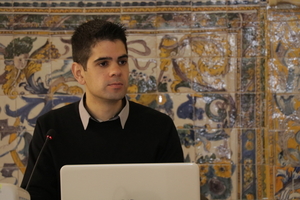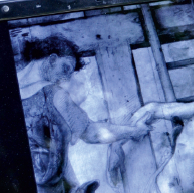
Doutoramento em Engenharia Mecatrónica e Energia
Advances in integration of photovoltaic power and energy production in practical systems
Tomás Oliveira Fartaria

Orientação: Manuel Collares Pereira
This thesis presents advances in integration of photovoltaic (PV) power and energy in practical systems, such as existing power plants in buildings or directly integrated in the public electrical grid. It starts by providing an analyze of the current state of PV power and some of its limitations. The work done in this thesis begins by providing a model to compute mutual shading in large PV plants, and after provides a study of the integration of a PV plant in a biogas power plant. The remainder sections focus on the work done for project PVCROPS, which consisted on the construction and operation of two prototypes composed of a PV system and a novel battery connected to a building and to the public electrical grid. These prototypes were then used to test energy management strategies and validate the suitability of the two advanced batteries (a lithium-ion battery and a vanadium redox flow battery) for households (BIPV) and PV plants. This thesis is divided in 7 chapters: Chapter 1 provides an introduction to explain and develop the main research questions studied for this thesis; Chapter 2 presents the development of a ray-tracing model to compute shading in large PV fields (with or without trackers); Chapter 3 shows the simulation of hybridizing a biogas plant with a PV plant, using biogas as energy storage; Chapters 4 and 5 present the construction, programming, and initial operation of both prototypes (Chapter 4), EMS testing oriented to BIPV systems (Chapter 5). Finally, Chapters 6 provides some future lines of investigation that can follow this thesis, and Chapter 7 shows a synopsis of the main conclusions of this work.
Keywords: Photovoltaics and grid interface, Vanadium Redox Flow Battery, Energy Management Strategies




